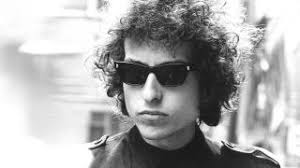All Along the Watchtower
Intro:
So far in this series I’ve looked at songs that can be put
in the camp of interpretations. There was just a different vision of the song This is the first time I will look at a song
in which the version was more successful and considered better than the
original (even by the song writer himself). This is a case of the version
taking on a life and trajectory of its own.
The Scene:
It’s 1967/1968, and America’s military presence in Vietnam
escalates, with military personnel reaching a total of 475,000. Protesting
became more intense and rioting and looting becomes widespread across American
cities, cumulating in the National Guard being called in to restore law and
order in Detroit. The Beatles continue to revolutionize popular music with
their “Sargent Pepper’s lonely Hearts Club Band”. Israel acquires vast swathes
of territory after the six day war.
All Along the Watchtower was written and recorded by
legendary singer song writer and Nobel winner Bob Dylan for his John Wesley
Harding album. It’s a ballad, a song that tells a story, although in this case
a mystic, vague story. The narrative structure feels like a Quentin Tarantino
film with holes and jumping around in the usual beginning, middle and end flow
of the tale. A lot is left up to the imagination of the listener to fill in the
blanks. Hell, Dylan is even taking liberties with basic semantics. A watchtower
isn’t a path, or a way, you can go up and down it but not along it.
The music is sparse and simple. Drums, bass and guitar
follow a simple rhythm and chord structure and harmonica solos fill in the
space between the verses.
The Version:
Well if Dylan’s original was musically Spartan, famed
guitarist Jimi Hendrix decided to go in the exact opposite direction when he
recorded it for his Electric Lady land album six months later. Hendrix spent a
lot of time in the studio working on it. The master moved from a four track, to
a twelve track and finally a sixteen track machine, with Hendrix constantly
splicing and changing things like a mad scientist in a laboratory. You can
really feel this when listening; every little guitar part seems to have its own
personality and spirit to it, almost like Hendrix is trying to paint the missing
parts of the story with abstract melodic characters. Brian Jones of The Rolling
stones plays some percussion on the track (I love the organic relationships of
musicians from this time, in contrast to the “Featuring” tracks of modern pop music,
when you know the artists are working together because some suits in an office
thought there was product synergy between them).
Conclusion:
This is the most played song in Dylan’s live repertoire and
over time he has worked elements from Hendrix’s vision into his own. In Dylan’s
own words: "I liked Jimi Hendrix's record of this and ever since he died I've
been doing it that way ... Strange how when I
sing it, I always feel it's a tribute to him in some kind of way."
https://open.spotify.com/playlist/5cp0S5TUsykE80AbvwBFej?si=Q09HRF3pRvK-ggNW_BMKxA





Comentarios
Publicar un comentario